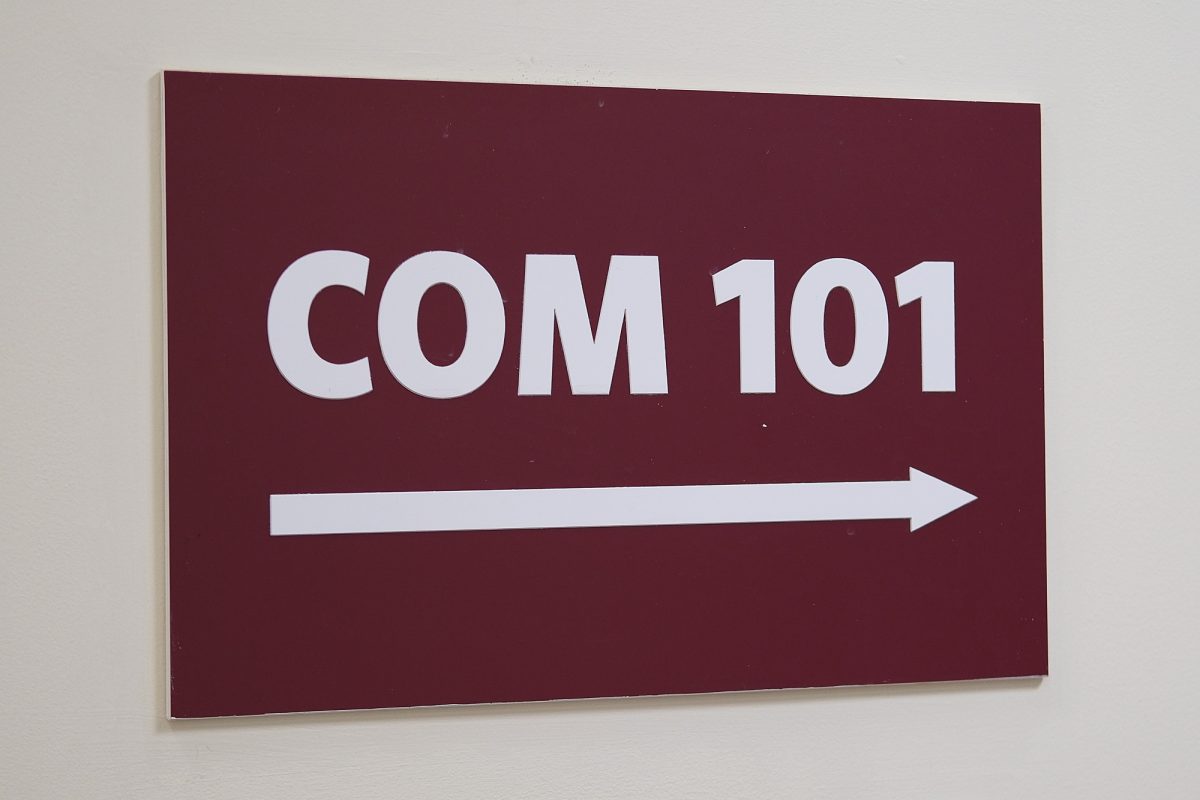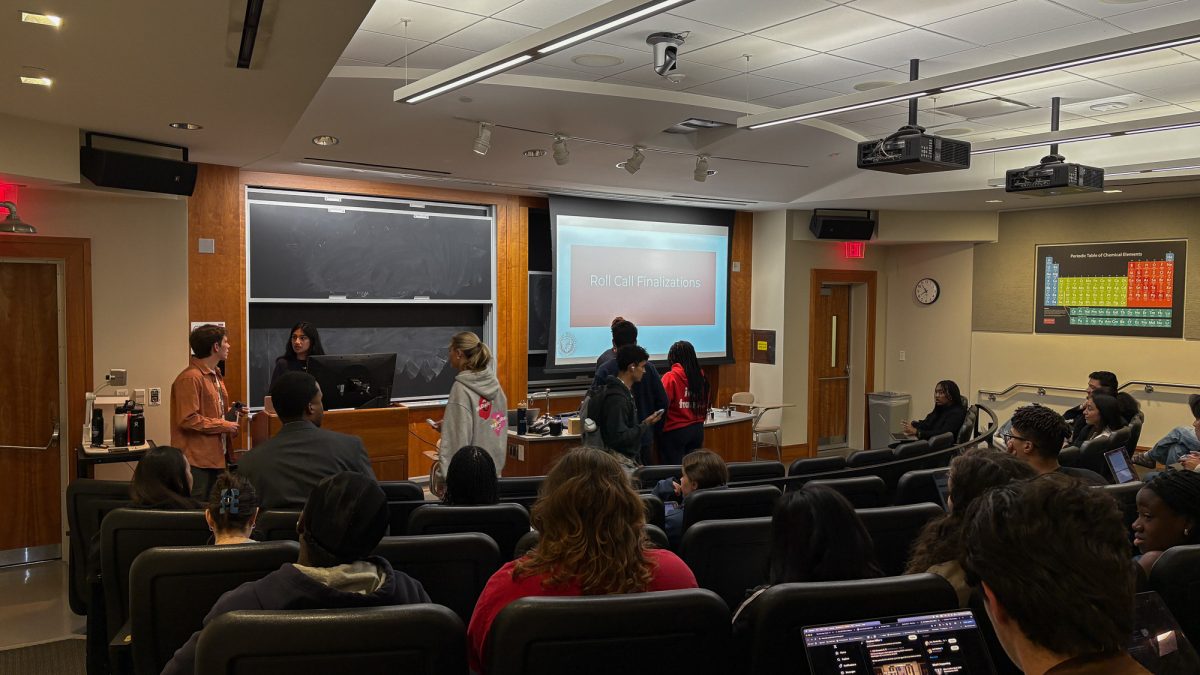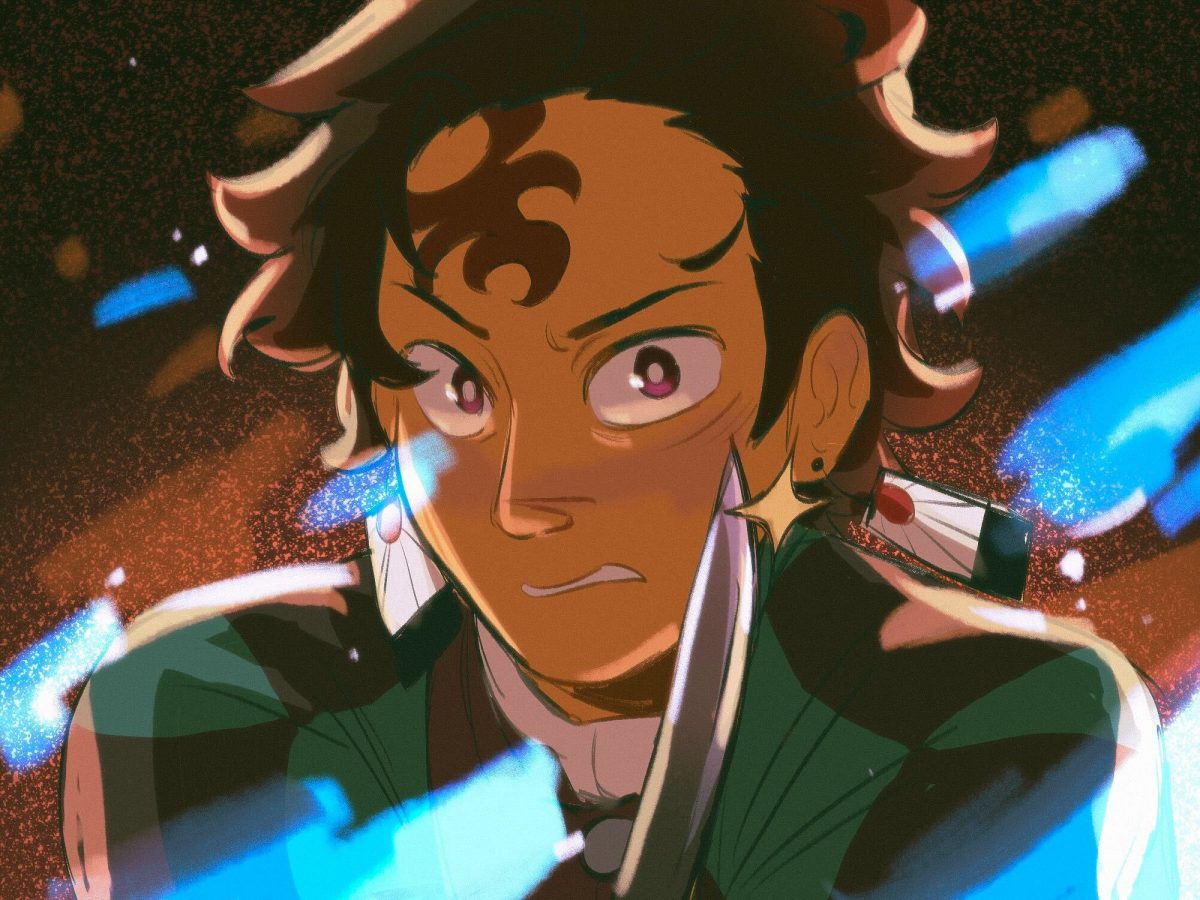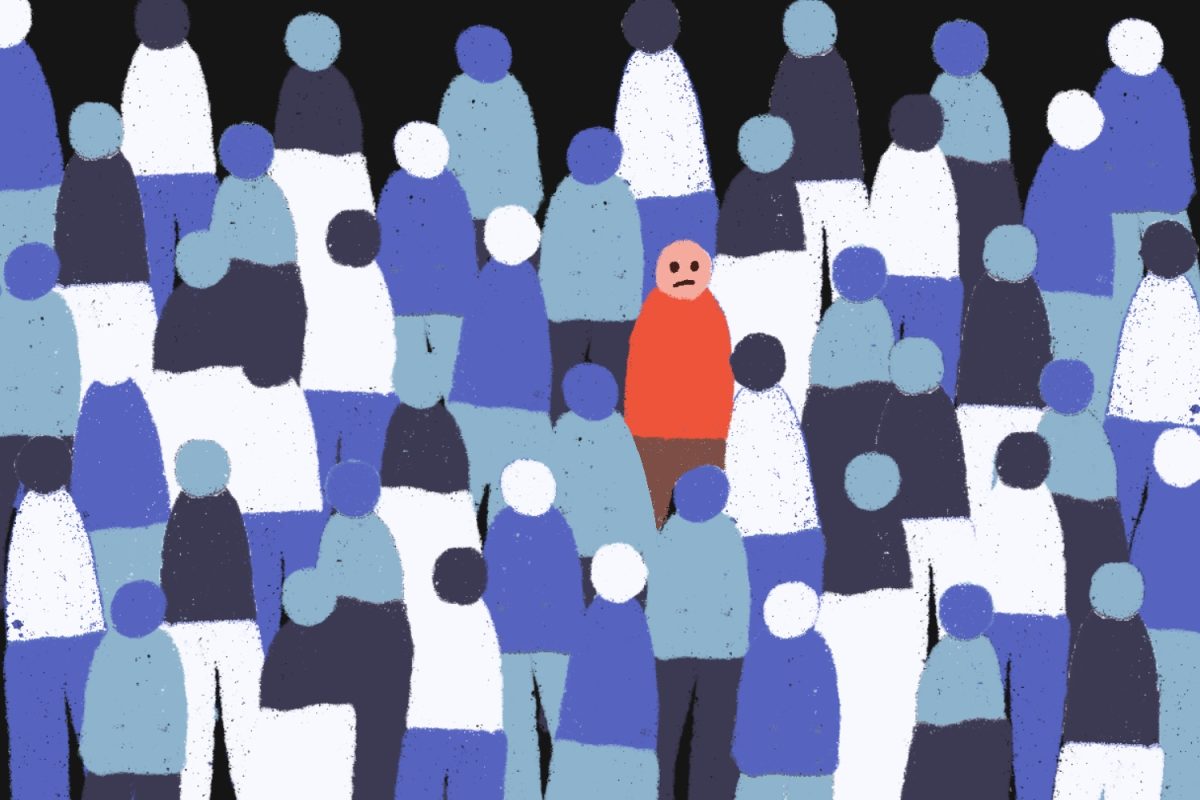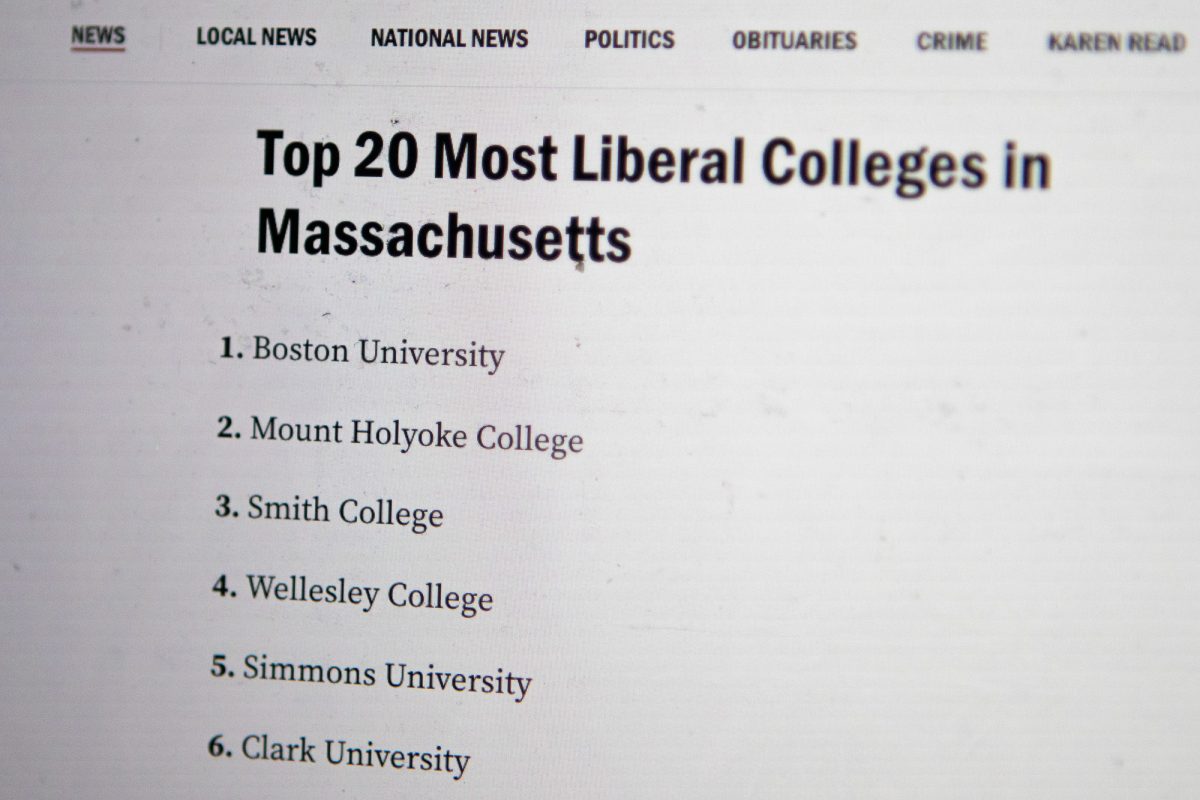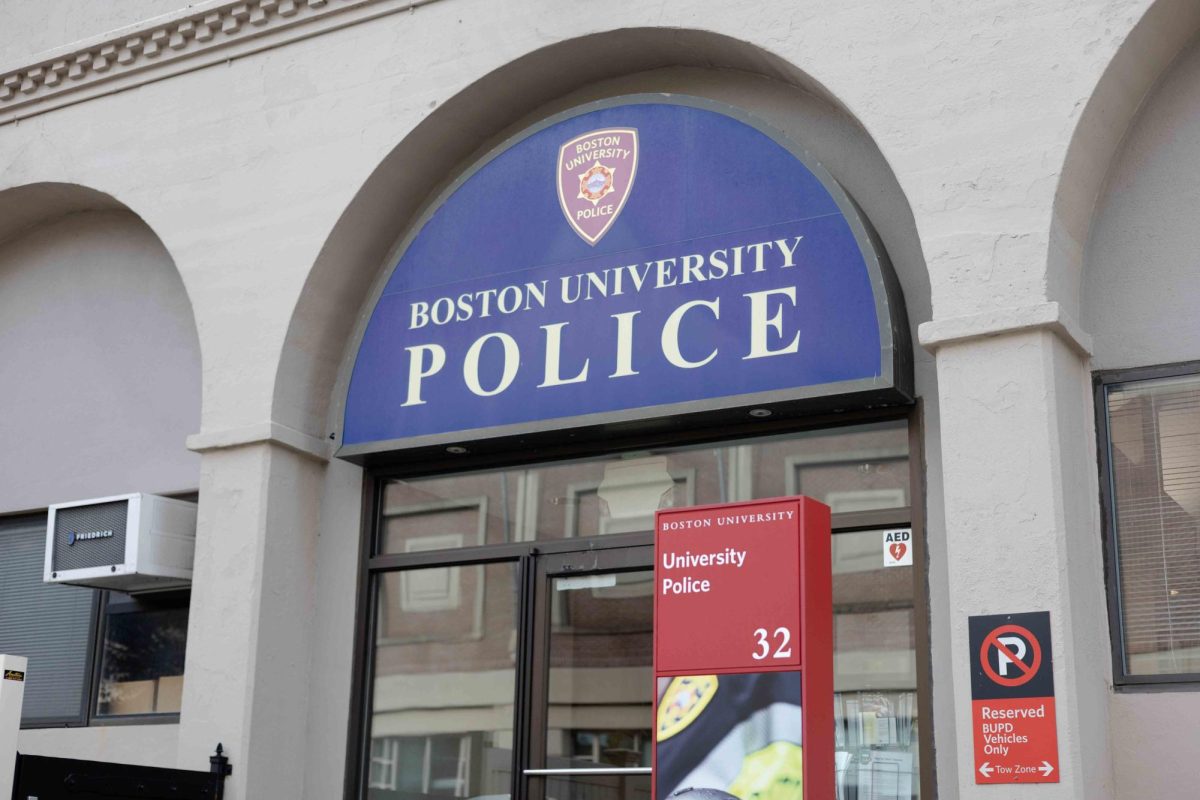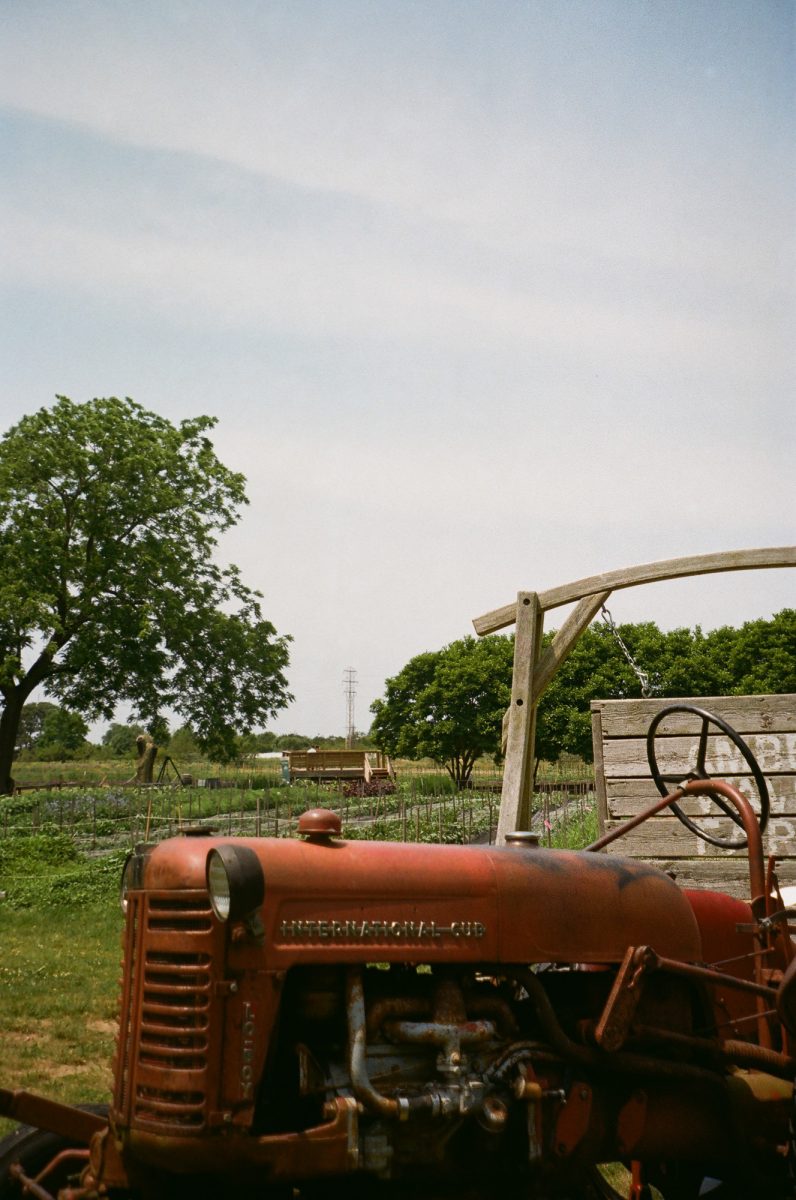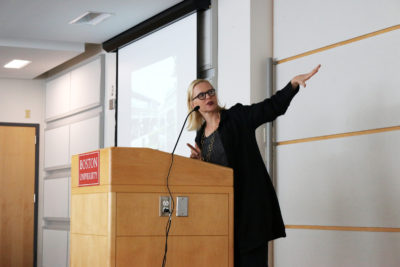
A drab white wall would have dominated the lobby of the new Rajen Kilachand Center for Integrated Life Sciences and Engineering, had the Blue-Green Brainbow, a 230-cubed-foot three-dimensional wall fixture by Brooklyn, NY-based artist Carson Fox not been installed.
Fox presented her artwork to approximately 20 people at the Photonics Center in a lecture organized by the College of Fine Arts and BU Arts Initiative Thursday afternoon.
The artwork, hued in variations of blue and green, is studded with 13,500 plastic balls that abstractly depict a type of neuroimaging technique called the Brainbow — an expression of more than 100 fluorescent pigments exuded from a mouse’s neurons, according to Fox.
“That’s the best one I’ve ever made,” Fox said of Blue-Green Brainbow.
Fox, who has created numerous works of public art, said her artwork’s inspiration stemmed from a thorough look into CILSE’s projects, which include brain research.
“I’m really interested in natural forms,” Fox said after her lecture, “and the kinds of forms I’m interested in are the ones that have an inherent way of keeping time within them.”
The resin wall comprises three layers, each fixed with orbs protruding at lengths of between half an inch and three inches.
Fox said it took her and her team six to eight weeks to craft the artwork’s different aspects, including molding and coloring the resin. The team worked six 14-hour days to install the materials in CILSE.
CFA and the BU Arts Initiative jointly began planning the artwork’s production and installation about a year ago, and selected Fox after weeding out eight other artists’ proposals, according to Lynne Allen, the interim dean of CFA.
“She used her artistic vision,” Allen said before the presentation, “to come up with an overall piece that would reflect something that those scientists and those researchers that walk into that building are going to recognize.”
Allen said she reviewed the artwork proposals with a committee that included Gloria Waters, BU’s vice president and associate provost for research.
Ty Furman, the managing director of the arts initiative, said the university aims to energize the ambience of the CILSE lobby with the artwork.
“It’s a large lobby,” Furman said before the lecture. “It’s meant to be a welcoming place, a place where we want people to be interested in. Art helps that.”
During the lecture, Fox also discussed her experience with working on other public art projects, which include installations at schools, offices, hospitals, public transportation hubs and residences.
Speaking about her project at the Seaford Long Island Rail Road station in New York, which features drawings of birds on a glass wall, Fox told the audience about the criticism she received for the surrealistic nature of her bird depictions.
“I refer to nature, but I don’t stick to it,” Fox said, alluding to her penchant for nature in art.
Fox has been a professional artist for 20 years since she received her Master of Fine Arts degree from Rutgers University.
Her works have been featured in various museums, from the Royal Museums of Fine Arts of Belgium to the New Jersey State Museum, according to her website.
Several of the people who witnessed the artwork’s presentation said they appreciate Fox’s work, underlining the wall fixture’s relevance to CILSE and nature.
Althea Ruoppo, a first-year doctoral student in the Graduate School of Arts and Sciences, said she came to the lecture to learn about public artworks and how artists negotiate commissions for their projects.
“It’s a really huge undertaking. It’s wonderful for the university,” Ruoppo said before the lecture. “It promotes lots of different students from different backgrounds in different departments and schools in the university.”
Xinyue Zhao, a layout assistant in BU’s marketing and communications department, said she finds the artwork’s color palette appealing and accurate with the brain activity depicted.
“It is exactly telling about stories that happen in biological [and] engineering industries,” Zhao said after the lecture. “All the dots here in 3-D remind me of how people connect to each other and how minds work in all things related to science.”
Carlos Guevara, a senior studying neuroscience in the College of Arts and Sciences, said he recognizes various forms of protein in Fox’s work.
“I find it very interesting because the [Green Fluorescent Protein] and all those other proteins, those are the most important discoveries in neuroscience and other fields as well,” Guevara said before the artwork’s launch at CILSE, which followed the presentation at Photonics. “It’s a perfect piece of artwork.”






